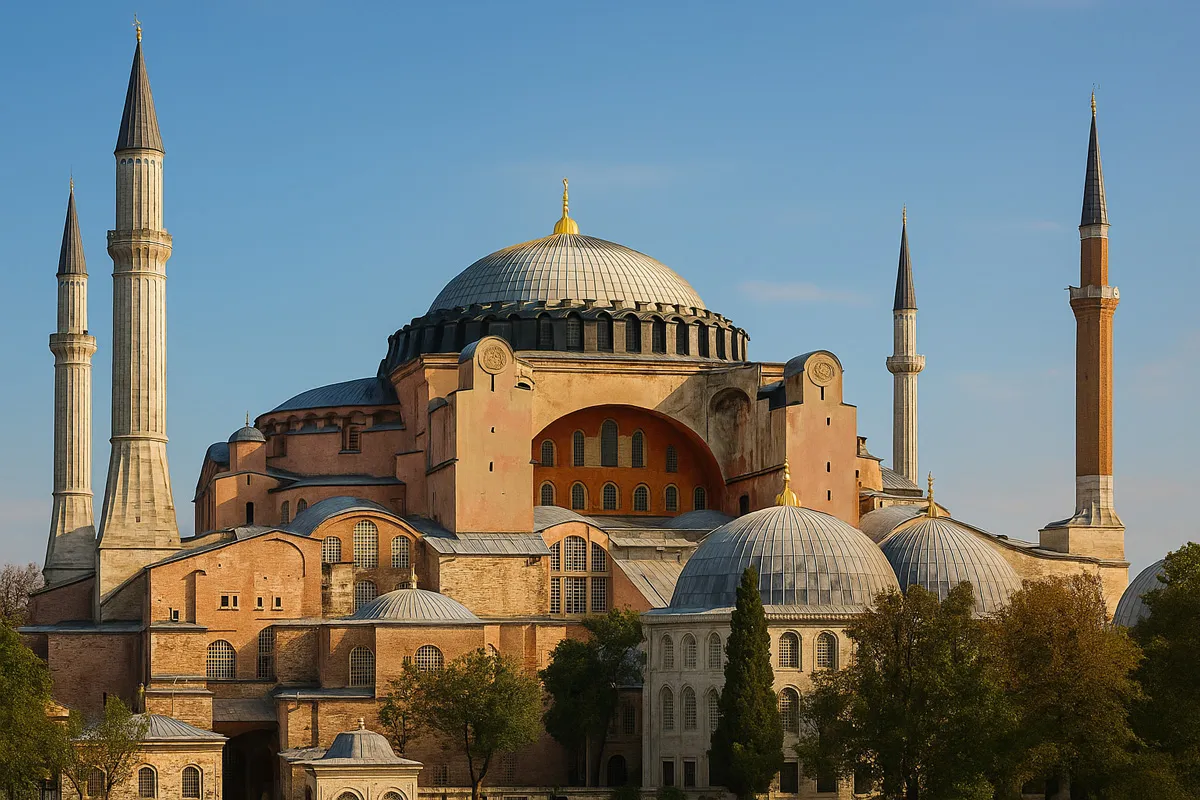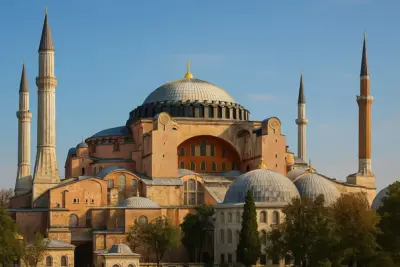Introduction — Where Silence Glows
Welcome to the second floor of Hagia Sophia — a space where silence itself seems to shine.
In this continuation of our Upper Gallery guide, we’ll explore the fresco of Mary and Jesus, the four Seraphim angels, and the mysterious Marble Door once reserved for emperors.
Every beam of light here still carries a whisper of ancient prayer.
8. Mary and Jesus in the Dome — A Prayer Floating in Light

 Barış
Barış“Noah, look up. See that golden arch? The mother and child are floating in silence.”



“Woof! That’s Jesus and Mary, right?”
In the heart of Hagia Sophia’s upper gallery, light and faith meet upon a single wall.
High above the golden arches rests a tender fresco of the Virgin Mary and the Child Jesus.
For centuries it was hidden beneath layers of plaster — yet through patient restoration, it has once again returned to light.
Each time the gold leaf catches the sun, the wall seems to breathe with an eternal glow.
Believed to have been painted in the late 10th century, this masterpiece symbolizes the “rebirth of faith” in the Byzantine Empire.
Mary’s calm eyes meet the visitor, while the infant Jesus lifts His right hand in blessing.
Yet this sacred image cannot be seen at every hour.
During Islamic prayer times (Salat), a white curtain descends gently from the dome, covering the figures of Mary and Jesus.
It is a quiet act of respect — a way to avoid idolatry while preserving the sacred art itself.
From the second-floor balcony, visitors can glimpse a faint shimmer of gold through the veil.
That light, filtering softly through fabric, feels like a symbolic boundary between faiths.
This scene of peaceful coexistence embodies Hagia Sophia’s long and layered history —
a sacred space where Islam and Christianity continue to honor each other, guarding the same house of worship across the centuries.



Barış: “Even when hidden, faith doesn’t disappear.”



“Woof! The light is still there!”
9. The Four Seraphim — Heavenly Guardians of the Dome
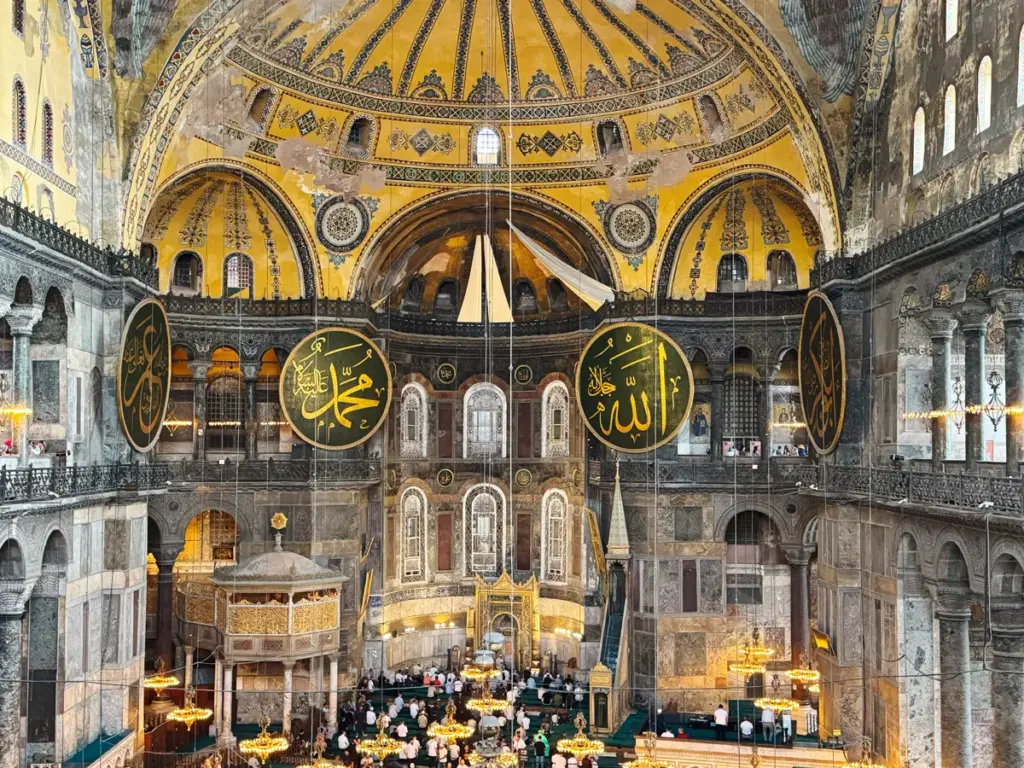




“Noah, look at the four corners of the dome. Do you see those wings?”



“Woof! Six wings each!”
In the pendentives beneath the dome spread the six-winged Seraphim, the highest order of angels guarding the throne of God — known in Byzantium as the Guardians of Divine Light.
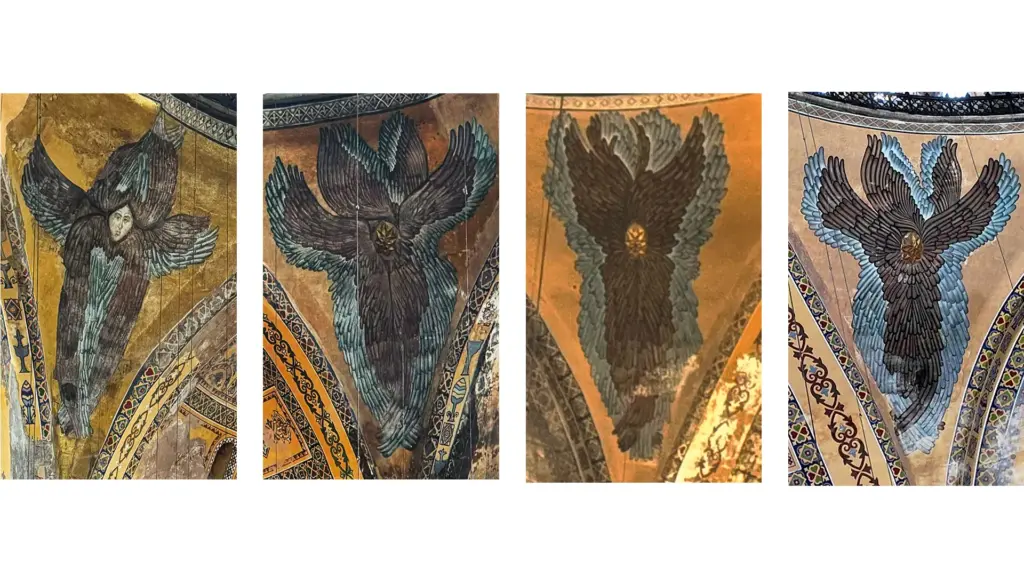

- Six wings = divine majesty and protection
- Covered faces = humility before God’s glory
- Circular placement = heaven surrounding creation
During the Ottoman era, their faces were plastered to avoid idolatry.
Later, one was revealed — likely Archangel Michael.
Modern AI reconstructions restore the deep blues and golds, reviving the “heavenly brilliance” once seen by Byzantine worshippers.
When sunlight shifts, their wings appear to flutter.



“These angels watch over everyone who prays below.”



“Woof! Maybe they’re watching us too!”
10. The Marble Door — The Emperor’s Hidden Threshold
On the southern side of the upper gallery stands the Marble Door (Mermer Kapı) — a masterpiece carved entirely from stone that seems to open but never does.
-1024x847.webp)
-1024x847.webp)



“Noah, that door is made of marble.”



“Woof! Like a stone illusion!”
Beyond it once lay the Metatorion, the emperor’s private chamber for sacred debate and preparation before ceremonies — a symbolic boundary between earth and heaven.
Carved in the 6th-century Justinian style, its spirals and geometric motifs shift with the light, as if the stone itself breathes.
Best time to view: 2 – 4 p.m. when shadows accentuate the relief.
Tip: Observe quietly and avoid touching — the surface is fragile.



“It’s a door you can’t pass through, but you can feel it.”



“Woof! A door that opens in the heart!”
11. Viewing & Photography Tips — Reading the Light
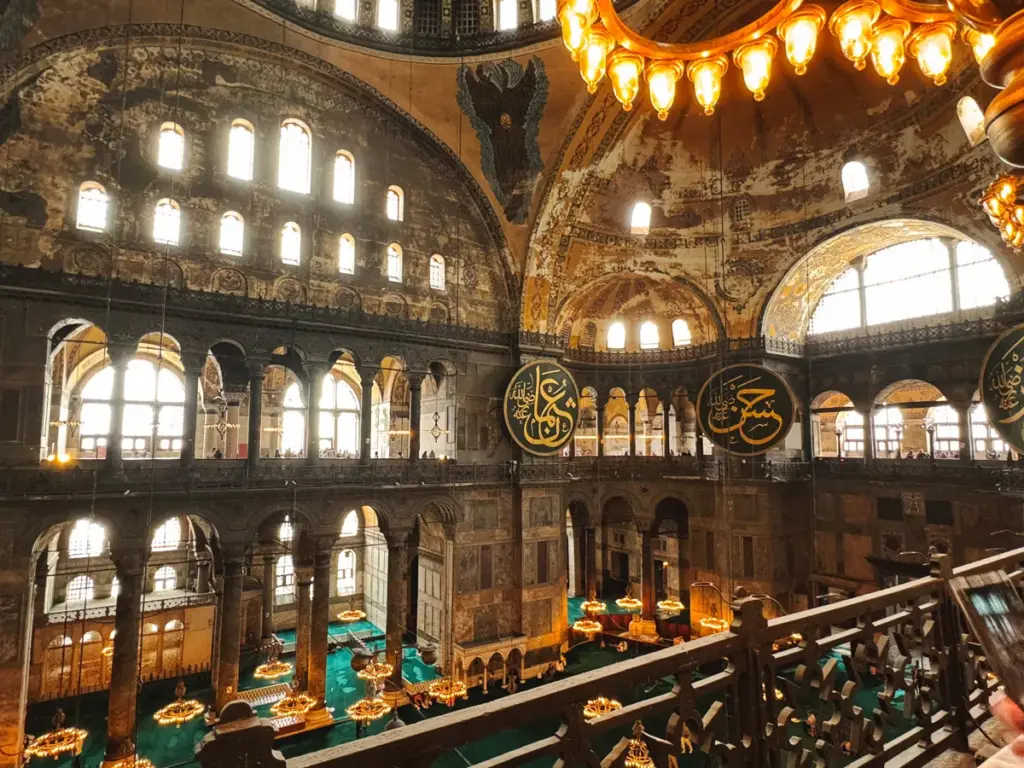

From the upper gallery you can look down on the main hall, where prayers and golden reflections merge into one living scene.
Here, architecture itself seems to pray.
Photo Guide
- South Gallery Center: Full dome framing
- East Windows: Include the Blue Mosque in background
- 3:30 – 4:00 p.m.: Soft golden light for mosaics
Recommended Settings
- ISO 800 – 1600 (low noise)
- Shutter 1/80 – 1/100 (steady hands)
- Enable HDR on iPhone



“Which moment will you capture, Noah?”



“Woof! Just before the light fades!”
12. Location & Access (2025 Update)
Hagia Sophia Grand Mosque (Ayasofya Camii)
Sultanahmet, Fatih, Istanbul
- Tram T1: Sultanahmet Station → 5-min walk
- From Istanbul Airport: ≈ 70 min (Havaist + Tram)
- Hours: 9:00 – 19:00
- Admission: €25 (check latest info
- Note: Upper areas closed during prayer times
Nearby Highlights
- Blue Mosque: Hagia Sophia’s twin in spirit
- Topkapı Palace: Legacy of Ottoman power
- Basilica Cistern: Underground world of light and shadow
Where to Stay
| Hotel | Highlights |
| Sura Hagia Sophia Hotel | 1-minute walk, great views |
| Four Seasons Sultanahmet | Restored Ottoman mansion |
| Boutique Saint Sophia | Balcony view of the Hagia Sophia |
Where to Eat
- Seven Hills Restaurant — Panoramic rooftop view
- Sultanahmet Köftecisi — Traditional meatballs
- Deraliye Ottoman Cuisine — A renowned restaurant for royal Ottoman dishes



“Let’s see it again tonight under the lights.”



“Woof! I want to see the night glow too!”
FAQ
- Can anyone visit the upper gallery?
-
Yes, though access is limited during prayer times.
- Is photography allowed?
-
Yes, without flash.
- When is the white curtain lowered?
-
During Islamic prayers (Salat); it is raised afterward.
- Is it wheelchair accessible?
-
The upper floor has stairs; assistance is recommended.

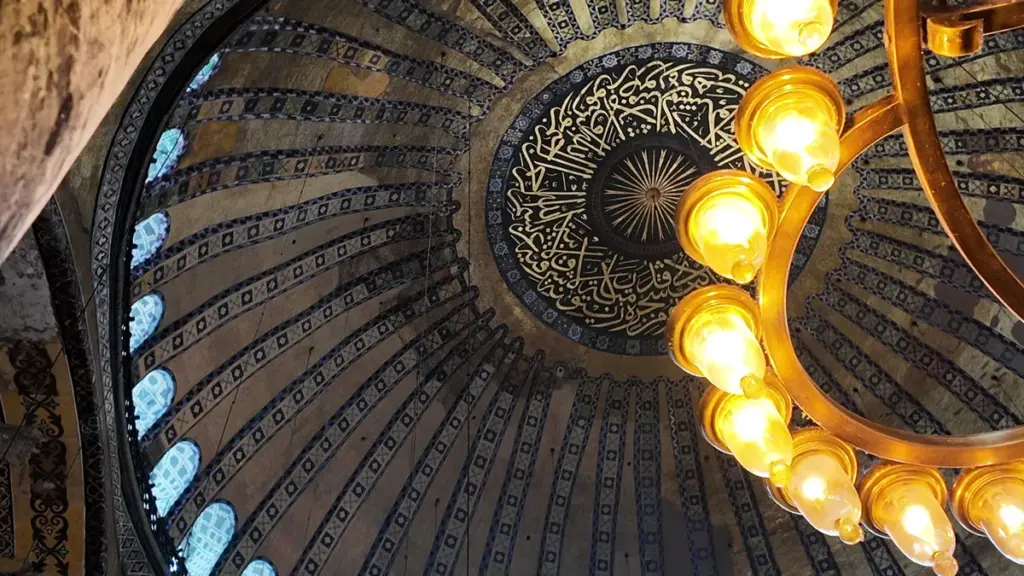
The dome of Hagia Sophia’s upper gallery, softly glowing with the light of centuries.
14. Conclusion — Where Faiths Share the Same Light
The fresco of Mary and Jesus still glows softly behind the white veil — a symbol of faith that has survived centuries.
Here, Christian and Islamic devotion coexist, proving that holiness lies not in division but in shared respect.
Key Takeaways
- Dome fresco — A prayer in light
- Seraphim — Wings of divine protection
- Marble Door — The emperor’s sacred threshold
- Viewpoint — Architecture as living prayer
- Coexistence — Two faiths guarding one home



“Hagia Sophia is architecture that still prays.”



“Woof! My heart feels full in this silence.”
Read Part 1 — Golden Prayers and Imperial Mosaics →
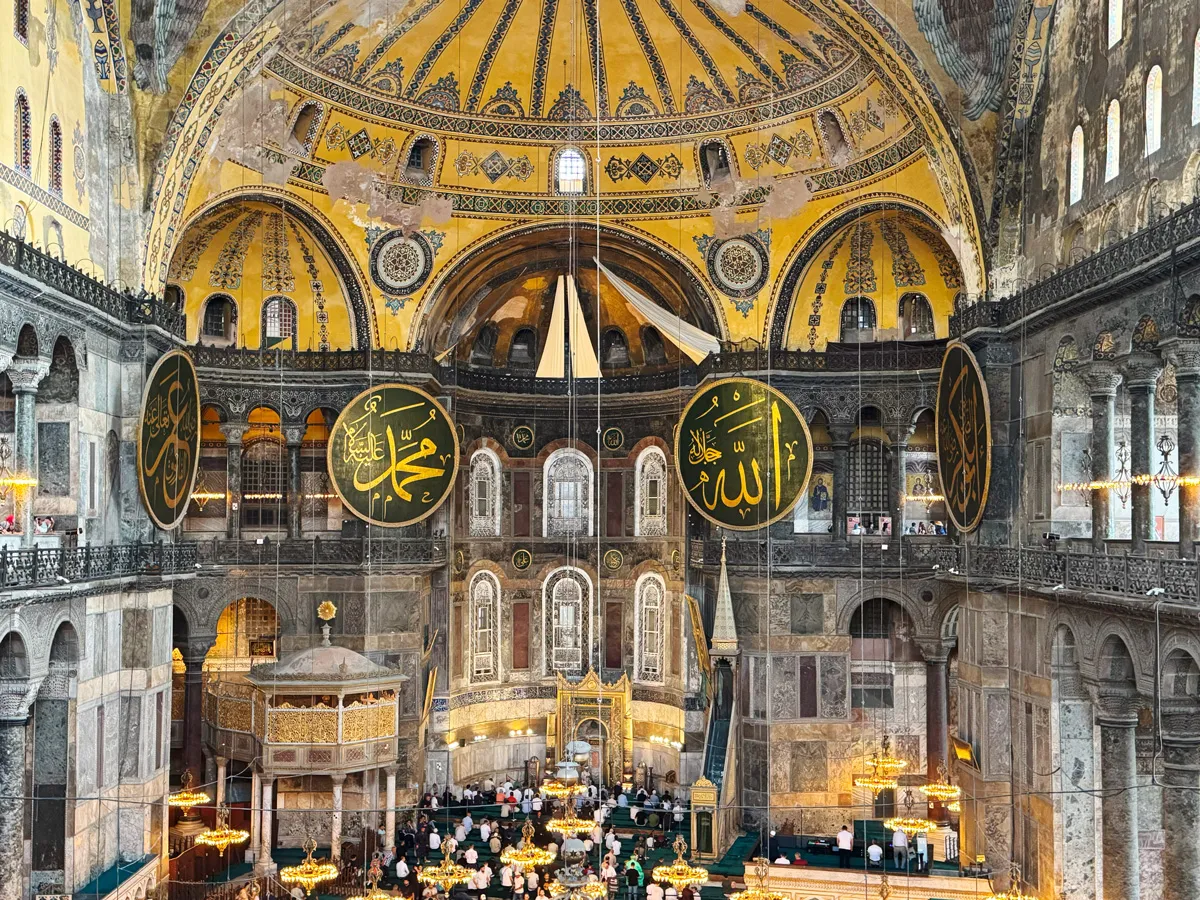



.jpg)
.jpg)

